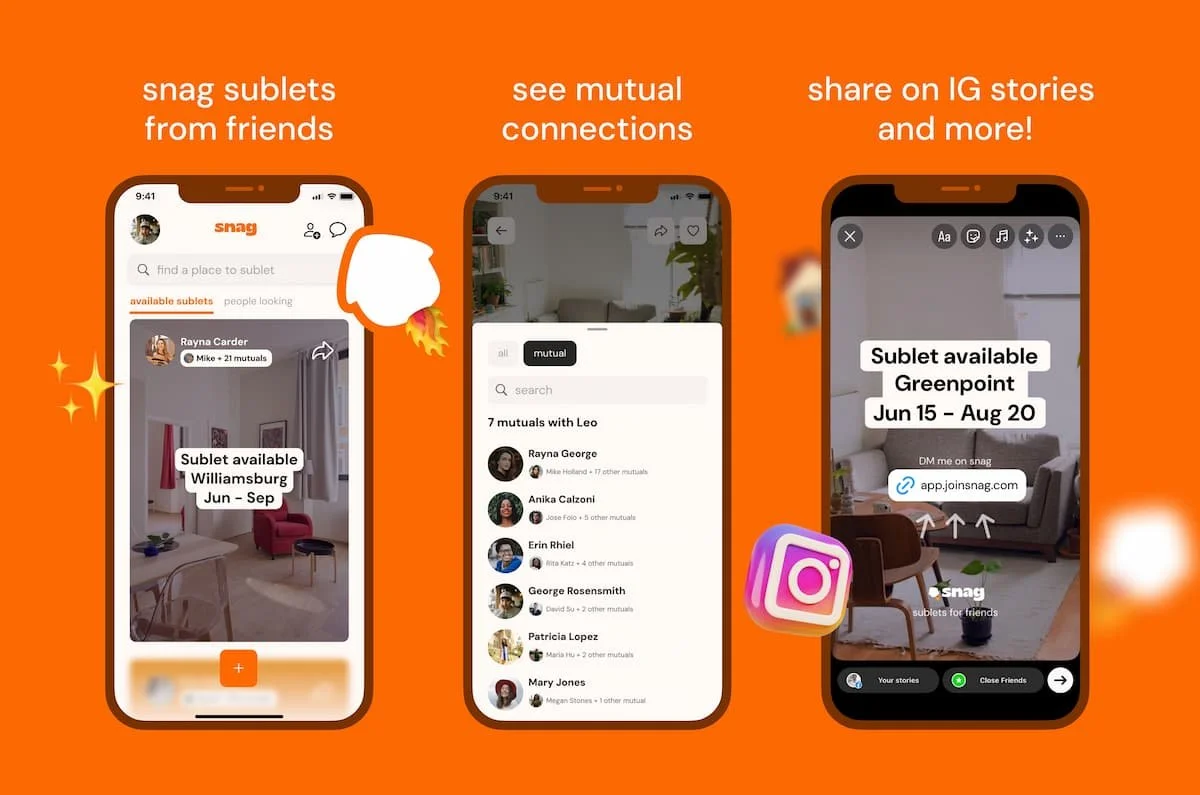How to Find a Sublet in NYC: A Complete Guide
Subletting an apartment in New York City can be one of the most practical ways to land flexible housing—especially if you’re not ready to commit to a full-year lease. Whether you're relocating temporarily for work, waiting for your ideal apartment to open up, or simply testing out a new neighborhood, a sublet offers a way to move in NYC without the long-term pressure.
But finding a good sublet isn't always straightforward. Between legal restrictions, inconsistent listings, and the occasional scam, the process can feel overwhelming if you're not prepared. Fortunately, with the right tools and knowledge, you can cut through the noise and find a sublet that fits your budget, location preferences, and timeline.
This guide will walk you through the best places to find NYC sublets, what to look out for, how to protect yourself legally and financially, and tips for efficiently navigating the process.
Where to Look for NYC Sublets
With high turnover, short-term demand, and a constantly moving population, New York City has no shortage of sublet opportunities. The challenge isn't quantity—it’s knowing where to look and how to spot a legitimate, well-suited listing. Below are the most reliable platforms and communities to start your search.
Leasebreak: Short-Term and Furnished Listings
Leasebreak.com is designed specifically for short-term rentals, lease takeovers, and sublets in New York City. Unlike general apartment sites, its listings are focused on leases under 12 months, often with flexible start and end dates. You’ll find everything from furnished studios to full apartments with utilities included.
The platform also caters to renters who need to break their lease early, which means listings can be priced competitively. Leasebreak allows users to filter by borough, rental length, and furnishings, making it easy to narrow down what fits your situation.
Reddit and Facebook Groups: Real-Time, Community-Driven Options
Online communities like Reddit’s r/NYCapartments and r/AskNYC have become go-to resources for sublet seekers. These forums allow current tenants to post available rooms or apartments and answer questions from potential subletters.
Facebook groups are even more active. Pages like “NYC Sublets & Apartments” have thousands of members and daily posts. They often feature listings from students, creatives, or people with temporary housing needs. Because many of these posts are informal, you’ll need to vet each listing carefully. But they can also lead to flexible deals and faster responses.
Listings Project: Curated and Creative-Friendly Sublets
Listings Project is a curated newsletter and online board featuring sublets, studios, and live-work spaces. It’s especially popular with artists, freelancers, and remote workers. The platform is known for its vetting process and community feel, which adds a layer of trust not always present on more open platforms.
New listings go live weekly, and many are in highly desirable areas like Brooklyn, Harlem, and Astoria. If you're looking for a place with character and flexibility, this is worth exploring.
Craigslist, Roomi, and SpareRoom: More Variety, More Opportunities
Craigslist remains a widely used platform, especially for last-minute sublets and budget options. However, it requires extra caution. Always insist on seeing the apartment in person or via video call and never send money before verifying the legitimacy of the listing.
Roomi and SpareRoom offer more structured platforms. Both let users create profiles and browse listings with filters for price, borough, and rental duration. These are particularly useful if you're looking for a room within a shared apartment or a furnished space.
Use Newer Apps to Find Off-Market Sublets
Many great sublets are shared through personal connections, often before they hit public listing sites. Try apps like snag, which connects you with trusted subletters sharing their spaces directly. You get access to affordable, reliable, flexible, and trusted sublets through personal connections.
Ask Your Network: Friends, Family, and Colleagues
One of the most overlooked strategies is simply asking around. Friends, coworkers, or even distant acquaintances may know someone subletting their apartment or looking for a reliable tenant. These kinds of connections can lead to more trustworthy arrangements and possibly better deals, since they’re not always listed publicly. Word of mouth is still one of the most effective ways to find housing in New York.
What to Know Before You Sign a Sublet
Finding a sublet that fits your needs is only half the process. Before you hand over any money or sign anything, it’s important to understand the legal and logistical details of subletting in New York City. Not every sublet is created equal, and skipping this step can lead to confusion—or worse, an illegal arrangement that ends early or leaves you unprotected.
Is Subletting Legal in NYC?
In New York, subletting laws can be strict, especially in rent-stabilized or rent-controlled apartments. Even in market-rate units, many leases require that the original tenant get permission from the landlord before bringing in a subletter.
As a rule of thumb, tenants in buildings with four or more units have the right to request permission to sublet, but the landlord must still approve the sublet in writing. Subletting an apartment for fewer than 30 days is generally prohibited unless the unit is in a building zoned for short-term rentals or the tenant remains on the premises during the stay.
If a sublet violates these terms, the landlord could take legal action to remove both the tenant and the subletter. That’s a situation best avoided.
How to Protect Yourself from Sublet Scams
New York’s competitive housing market attracts plenty of honest renters—but it also draws its share of opportunists. If you’re looking for a sublet, it’s critical to protect yourself from misleading listings, misrepresented terms, or outright scams.
Red Flags to Watch for in Sublet Listings
Most scams follow a few predictable patterns. Here are some signs that a listing might not be legitimate:
The price is unusually low for the neighborhood or size of the space
The lister refuses to show the apartment in person or via video call
They ask you to wire money or pay upfront before seeing anything
Photos look too generic or professionally staged, and no personal details are available
The communication feels rushed or pushy, often with phrases like “I need to fill this today” or “first come, first serve”
If you’re browsing platforms like Craigslist or Facebook, always take extra precautions. Even legitimate listings on these sites may lack proper verification. Stick to platforms that offer profile verification, secure messaging, or reviews when possible.
Why a Written Sublet Agreement Is a Must
Practical Tips for Your NYC Sublet Search
Even with the right platforms and timing, finding the right sublet in New York takes effort. A few simple strategies can help you stay organized, avoid burnout, and move quickly when you find a place that fits.
Ask for Virtual Tours if You’re Remote
If you're not in the city yet, don’t commit to a place sight unseen. Many subletters are willing to give a video tour via Zoom or FaceTime, especially if the apartment is furnished and move-in ready.
Use this time to look beyond the furniture: check window views, ask about heating or A/C, and confirm whether the space matches the listing description. If someone refuses to show the unit in any form, treat that as a red flag.
Stay Flexible with Neighborhoods and Dates
The more flexible you are, the more options you'll have. Consider broadening your search radius to include adjacent neighborhoods, or be open to slightly different move-in dates.
If your goal is to get settled in New York and start your job, class, or project, then finding a decent, safe place may matter more than getting your dream address right away. You can always explore more permanent options later.
Once you’ve chosen a place and are ready to commit, do not rely on verbal promises or text messages to seal the deal. A written sublet agreement protects you and outlines the expectations on both sides.
At minimum, your sublet agreement should cover:
Duration of stay and exact move-in/move-out dates
Monthly rent and due date
What’s included (e.g., utilities, internet, furniture)
Any house rules or shared space arrangements
Security deposit terms and how it will be returned
Point of contact for repairs or emergencies
Having a formal agreement in place may not prevent every issue, but it provides a foundation if things go wrong. In some cases, it may even give you standing in a legal dispute if needed.
Before signing anything, ask to see the lease and verify whether subletting is permitted. Even if a tenant claims everything is above board, you have the right to ask for proof of landlord approval.
Best NYC Neighborhoods for Sublets
One of the advantages of subletting is the chance to live in a part of New York you might not otherwise consider. Whether you're looking for affordability, convenience, or community, there are neighborhoods in every borough where sublets are regularly available.
Budget-Friendly Boroughs and Blocks
All five of NYC’s boroughs have something to offer. If price is your top concern, look beyond Manhattan. Sublets in parts of Brooklyn, Queens, and the Bronx tend to offer more space for less money.
Bushwick and Ridgewood (Brooklyn/Queens border): Popular among creatives and students, with a strong sublet market and good subway access.
Crown Heights (Brooklyn): Offers a mix of brownstones and newer apartments, often at lower rents than nearby neighborhoods.
Washington Heights (Manhattan): One of the more affordable areas in Manhattan, with a strong community feel and access to multiple subway lines.
Astoria (Queens): Known for its neighborhood vibe, decent rents, and quick commute to Midtown.
These areas tend to have more flexible lease situations and are common among people offering short-term housing, especially in shared apartments.
Central and Commuter-Convenient Picks
If you need to commute to Manhattan or want to be centrally located, consider:
Bed-Stuy and Clinton Hill (Brooklyn): Slightly higher rents but frequent sublet turnover and access to multiple train lines.
Long Island City (Queens): Close to Midtown, modern buildings, and furnished units are often available for sublet.
Harlem (Manhattan): A mix of historic buildings and new developments with frequent listings for rooms and short-term stays.
These neighborhoods strike a balance between price, location, and transit access, making them ideal for professionals and students alike.
Short-Term Sublet Hotspots
Some areas naturally have more sublet activity, especially among students, artists, and professionals in transition.
East Village and Lower East Side (Manhattan): Popular with students and creatives, often home to furnished room rentals and short-term stays.
Williamsburg (Brooklyn): A hub for short-term listings, particularly during summer or travel-heavy months.
Park Slope and Prospect Heights (Brooklyn): Families or couples going abroad often sublet homes or large apartments here for one to six months.
These neighborhoods tend to have listings that are fully furnished and move-in ready, ideal for people looking for low-hassle transitions.
When to Start Looking for a Sublet in NYC
Timing plays a big role in finding a sublet that meets your needs. Start too late, and your options shrink. Start too early, and most listings won’t yet be available. The sweet spot depends on how flexible your move-in date is and what type of place you’re looking for.
Ideal Timing for the Best Listings
The general recommendation is to start looking about four to six weeks before your desired move-in date. This is especially true for furnished sublets or short-term rentals. Many subletters only begin advertising availability a few weeks ahead of time, particularly if they’re coordinating travel or waiting on final plans themselves.
If you're looking for a longer sublet (such as three to six months), you may be able to start earlier. Platforms like Leasebreak or Listings Project tend to include listings with more advance notice than community forums.
Planning Around Move-In Dates and Seasons
The time of year can also influence your search:
Summer and early fall (May through September) are peak moving seasons, which means more listings but also more competition.
Winter and early spring (January through March) typically see lower demand and, sometimes, lower prices.
End-of-month sublets are common, as many leases turn over around the first of the month. If you can plan your move mid-month, you may have access to listings others overlook.
Having some flexibility around your move date gives you a better chance of finding a sublet in the neighborhood or price range you want.
Final Thoughts on Finding the Right NYC Sublet
When subletting in New York City, start by using trusted platforms or community forums where others share their experiences. Ask your network. Get clear on your budget and timing. And always verify the legality of the arrangement before you sign.
A sublet might not check every box, but it can get you settled, offer flexibility, and help you explore a new neighborhood without long-term commitments. If you're relocating, Cool Hand Movers can help make the transition smooth from day one.
Need help moving into your new sublet? Get in touch with our team to schedule a move, ask questions, or learn about our packing and moving supply rental options.




